Do you have a question about the Samsung C32G73TQSU and is the answer not in the manual?
General safety warnings and precautions for product usage.
Guidelines for safe electrical connections and usage to prevent hazards.
Instructions for properly setting up the monitor and ensuring adequate ventilation.
Guidance on the correct and safe operation of the monitor.
Ensuring sufficient space for ventilation and proper placement of the monitor.
How to adjust the monitor's tilt and height for optimal viewing angles.
Overview of the monitor's control panel buttons and their functions.
Identification and description of all available input/output ports on the monitor.
Methods for connecting the monitor to a PC via HDMI, HDMI-DVI, or DP cables.
Step-by-step guide to connect the monitor to the power source.
Guidance on setting the optimal screen resolution for the best display quality.
Adjusting the screen refresh rate for smoother gaming visuals and reduced eye strain.
Enhancing visibility in dark game areas by adjusting brightness and contrast.
Eliminating screen tearing and stuttering for NVIDIA graphics cards.
Eliminating screen tearing and stuttering for AMD graphics cards.
Minimizing video processing time for faster reactions in games.
Selecting preset picture modes for optimal viewing in various environments.
Adjusting the overall brightness level of the picture.
Adjusting the difference between light and dark areas for clarity.
Enabling or disabling Picture-in-Picture (PIP) or Picture-by-Picture (PBP) modes.
Performing a diagnostic test to check monitor picture problems.
Running self-diagnosis to check for monitor screen problems.
Diagnosing and resolving various screen display problems.
Table detailing supported resolutions, frequencies, and timings.
General safety warnings and precautions for product usage.
Guidelines for safe electrical connections and usage to prevent hazards.
Instructions for properly setting up the monitor and ensuring adequate ventilation.
Guidance on the correct and safe operation of the monitor.
Ensuring sufficient space for ventilation and proper placement of the monitor.
How to adjust the monitor's tilt and height for optimal viewing angles.
Overview of the monitor's control panel buttons and their functions.
Identification and description of all available input/output ports on the monitor.
Methods for connecting the monitor to a PC via HDMI, HDMI-DVI, or DP cables.
Step-by-step guide to connect the monitor to the power source.
Guidance on setting the optimal screen resolution for the best display quality.
Adjusting the screen refresh rate for smoother gaming visuals and reduced eye strain.
Enhancing visibility in dark game areas by adjusting brightness and contrast.
Eliminating screen tearing and stuttering for NVIDIA graphics cards.
Eliminating screen tearing and stuttering for AMD graphics cards.
Minimizing video processing time for faster reactions in games.
Selecting preset picture modes for optimal viewing in various environments.
Adjusting the overall brightness level of the picture.
Adjusting the difference between light and dark areas for clarity.
Enabling or disabling Picture-in-Picture (PIP) or Picture-by-Picture (PBP) modes.
Performing a diagnostic test to check monitor picture problems.
Running self-diagnosis to check for monitor screen problems.
Diagnosing and resolving various screen display problems.
Table detailing supported resolutions, frequencies, and timings.
| Screen Size | 32 inches |
|---|---|
| Resolution | 2560 x 1440 (QHD) |
| Refresh Rate | 240 Hz |
| Panel Type | VA |
| Response Time | 1 ms (GtG) |
| HDR | HDR600 |
| VESA Mount Compatible | Yes (100 x 100 mm) |
| Curvature | 1000R |
| Aspect Ratio | 16:9 |
| Contrast Ratio | 2500:1 |
| Viewing Angle | 178°(H)/178°(V) |
| Brightness | 350 cd/m² |
| Connectivity | HDMI, DisplayPort, USB |
| Adaptive Sync | G-Sync Compatible |
| Color Gamut | DCI-P3 95% |
| Adjustability | Height, Tilt, Swivel |
| Color Support | 1.07 billion colors |
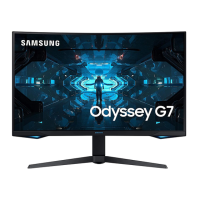
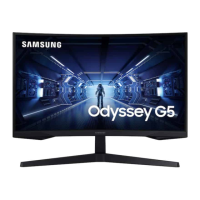
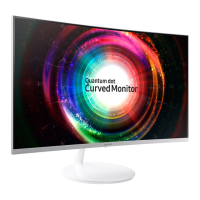
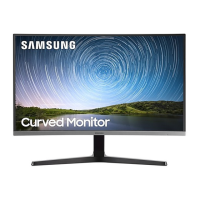
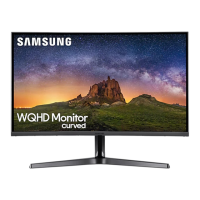
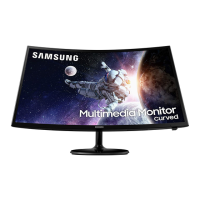




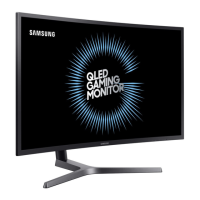
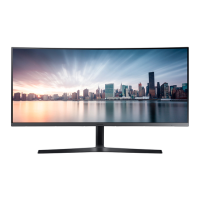
